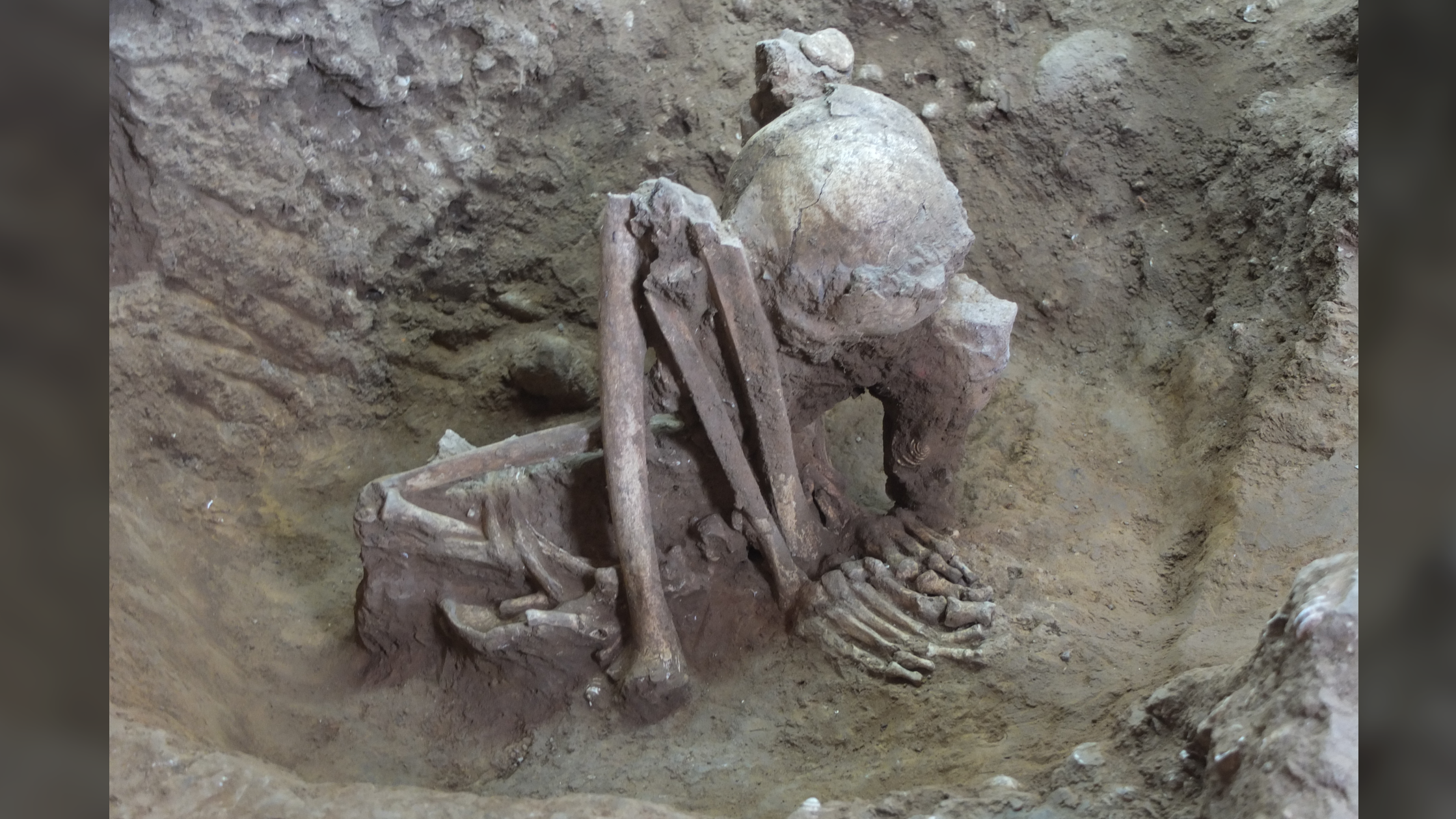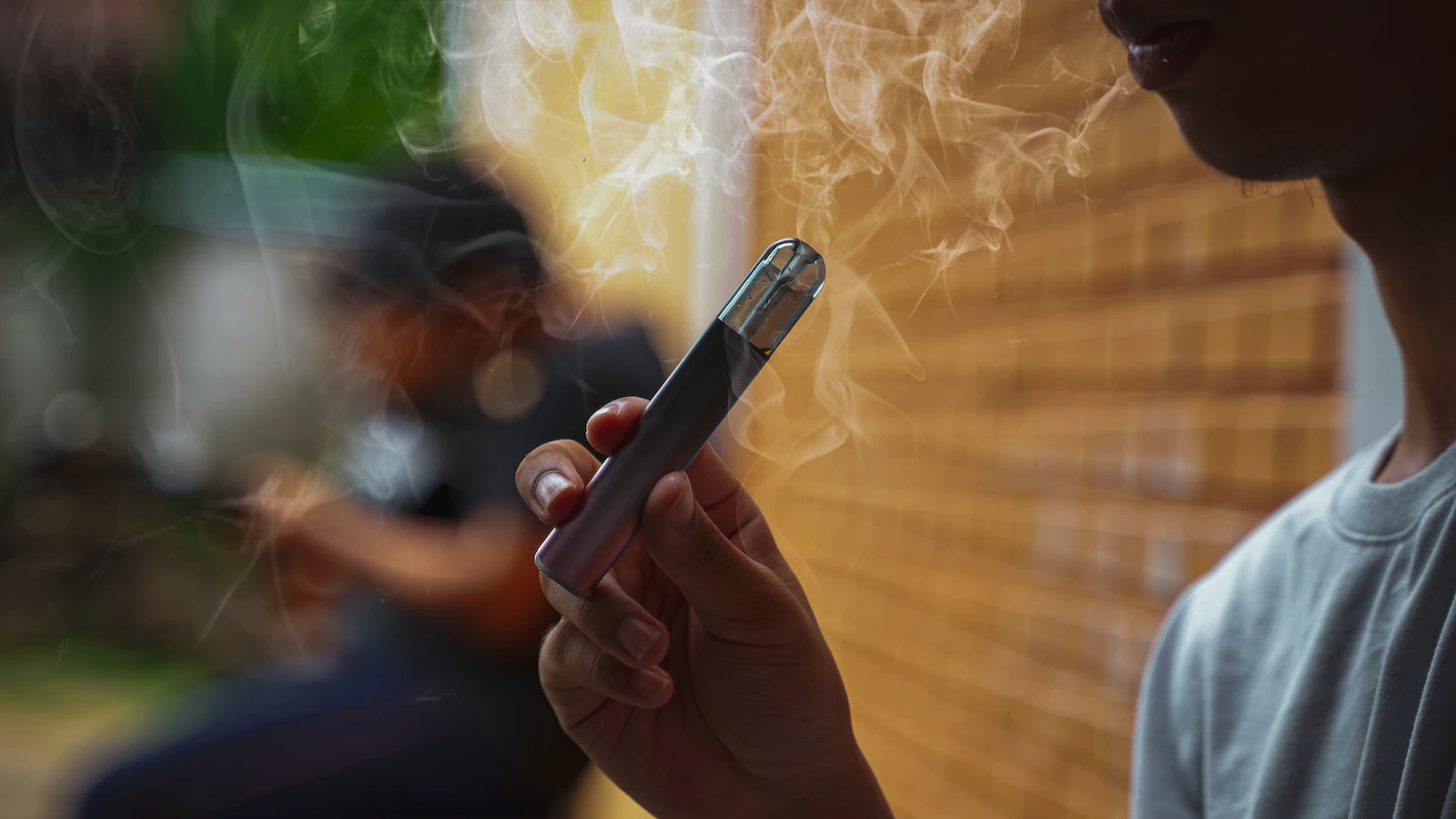World’s oldest mummies were smoke-dried 10,000 years ago in China and Southeast Asia, researchers find
By Kristina Killgrove
Copyright livescience

Skip to main content
Close main menu
Live Science
Sign up to our newsletter
View Profile
Search Live Science
Planet Earth
Archaeology
Physics & Math
Human Behavior
Science news
Life’s Little Mysteries
Science quizzes
Newsletters
Story archive
COVID vaccine poll
Ant clones members of another species
JWST takes best image yet
Science history: Gravitational waves detected
Best star projecter
Don’t miss these
Archaeology
‘Oddly shaped head’ left in Italian cave 12,500 years ago is Europe’s oldest known case of cranial modification, study finds
Archaeology
2,300-year-old arm tats on mummified woman reveal new insights about tattooing technique in ancient Siberia
Archaeology
Stone Age family may have been cannibalized for ‘ultimate elimination’ 5,600 years ago, study suggests
Human Evolution
Ancient human relative cannibalized toddlers, 850,000-year-old neck bone reveals
Human Evolution
140,000-year-old child’s skull may have been part modern human, part Neanderthal — but not everyone is convinced
Archaeology
An exotic quartz arrow may have killed a man 12,000 years ago in Vietnam
Archaeology
‘Strange’ tomb in Peru holds skeletons of people with ropes around their necks, hands tied behind their backs, archaeologists say
Archaeology
Remote cave in Guam reveals ancient voyagers carried rice to Pacific islands 3,500 years ago, study finds
Human Evolution
Oldest wooden tools unearthed in East Asia show that ancient humans made planned trips to dig up edible plants
Archaeology
50 amazing facial reconstructions, from Stone Age shamans to King Tut
Archaeology
New reconstructions show piercing eyes of men who lived 2,500 years ago in mysterious Indian civilization
Archaeology
350-year-old mummified head from Bolivia isn’t what it seems
Archaeology
Indigenous funeral urns discovered on human-made islands in Amazon rainforest
Archaeology
Archaeologists discover that parties 11,000 years ago were BYOB — bring your own boar
Archaeology
6,300 years ago, dozens of people were murdered in grisly victory celebrations in France
Archaeology
World’s oldest mummies were smoke-dried 10,000 years ago in China and Southeast Asia, researchers find
Kristina Killgrove
15 September 2025
The world’s oldest evidence for purposeful human mummification comes from Southeast Asia, where people smoke-dried their ancestors’ corpses 10,000 years ago.
When you purchase through links on our site, we may earn an affiliate commission. Here’s how it works.
The remains of a middle-aged man who was mummified and buried more than 9,000 years ago in Guangxi, China.
(Image credit: Yousuke Kaifu and Hirofumi Matsumura)
The world’s oldest known human mummies were created by smoke-drying corpses 10,000 years ago in Southeast Asia and China, long before mummification became commonplace in Chile and Egypt, new research shows.
A study of dozens of ancient graves found in China, the Philippines, Laos, Thailand, Malaysia and Indonesia revealed that many skeletons that were found in a tight fetal position were treated by an extended period of smoke-drying over fire before being buried. The research was published Monday (Sept. 15) in the journal PNAS.
“Smoking likely carried spiritual, religious, or cultural meanings that went far beyond simply slowing decay,” Hsiao-chun Hung, a senior research fellow at the Australian National University and lead author of the study, told Live Science in an email.
You may like
‘Oddly shaped head’ left in Italian cave 12,500 years ago is Europe’s oldest known case of cranial modification, study finds
2,300-year-old arm tats on mummified woman reveal new insights about tattooing technique in ancient Siberia
Stone Age family may have been cannibalized for ‘ultimate elimination’ 5,600 years ago, study suggests
The researchers had been puzzled by the high number of burials in China and Southeast Asia from 4,000 to 12,000 years ago in which the skeletons were “hyperflexed,” or contorted into unnatural tightly crouched positions. A similar skeleton found in Portugal in 2022 was interpreted as evidence of mummification because it was hyperflexed — likely bound up so the arms and legs could be moved beyond their natural limits as the body decomposed.
But in many of the ancient Southeast Asian burials, the researchers found, there was evidence of burning on the skeletons and not in the graves, which suggested some sort of ritual treatment of the body that included fire and smoke.
The researchers used X-ray diffraction, a nondestructive technique that allows scientists to investigate the internal microstructure of a material, and infrared spectroscopy to assess whether the bones had been exposed to heat. Many of the skeletons revealed evidence of low-intensity heating and discoloration from soot, rather than evidence of direct combustion such as a cremation. This suggests that a specialized mortuary practice involving the smoking of a corpse was likely practiced widely in pre-farming communities across southern China and Southeast Asia, the researchers wrote.
Related: ‘Overkill’ injuries on Bronze Age skeletons reveal fierce feuding in ancient China
Sign up for the Live Science daily newsletter now
Get the world’s most fascinating discoveries delivered straight to your inbox.
Contact me with news and offers from other Future brandsReceive email from us on behalf of our trusted partners or sponsorsBy submitting your information you agree to the Terms & Conditions and Privacy Policy and are aged 16 or over.
Smoke-dried mummies are still being made today in parts of Southeast Asia, according to the researchers. They traveled to Papua, a province of Indonesia, in 2019 and observed the Dani and Pumo people creating mummies of their deceased ancestors by tightly binding the corpses, setting them over a fire, and smoking them until they turned entirely black. Drawing on these examples, the researchers concluded that ancient individuals were tightly bound after death and smoked for long periods over low-temperature fires.
A modern smoke-dried mummy from the Dani people, Papua (Indonesia). (Image credit: Hirofumi Matsumura and Hsiao-chun Hung)
Although the deceased individuals the researchers investigated in their study are only bones — with no skin, soft tissue or hair preserved — they consider the remains to be mummies because they were deliberately mummified through smoke-drying.
“The key difference from the mummies we typically imagine is that these ancient smoked bodies were not sealed in containers after the process, and therefore, their preservation generally lasted only a few decades to a few hundred years,” Hung said. In the hot and humid climate of Southeast Asia, smoking was likely the most effective way of preserving the bodies, she said.
You may like
‘Oddly shaped head’ left in Italian cave 12,500 years ago is Europe’s oldest known case of cranial modification, study finds
2,300-year-old arm tats on mummified woman reveal new insights about tattooing technique in ancient Siberia
Stone Age family may have been cannibalized for ‘ultimate elimination’ 5,600 years ago, study suggests
But how these ancient hunter-gatherers discovered that smoking a human body could preserve it “remains a fascinating and thought-provoking mystery,” Hung said, and “we cannot say with certainty whether smoking the body was first conceived as a way to preserve it.” It’s possible that ancient people discovered smoking accidentally, as a by-product of some kind of ritual practice, or that they discovered smoking animal meat first and then applied it to dead humans.
“What is clear is that the practice prolonged the visible presence of the deceased, allowing ancestors to remain among the living in a tangible way, a poignant reflection of enduring human love, memory, and devotion,” Hung said.
Two-layer model of migration
The mummies may also support a “two-layer” model of early migration into Southeast Asia. This model rests on the idea that ancient hunter-gatherers came as a wave of migrating people as early as 65,000 years ago and were distinct from the later Neolithic farmers and their burial traditions who did not arrive until 4,000 years ago. The ancient hunter-gatherers who used the smoked burial practices may have given rise to modern-day human populations in Southeast Asia, such as the Dani and Pumo people who still practice this form of funeral ritual.
Ivy Hui-Yuan Yeh, a biological anthropologist at Nanyang Technological University who was not involved in the study, told Live Science in an email the new findings support the two-layer model and “are consistent with the patterns of early human migration, distribution, and interaction in Asia.”
RELATED STORIES
—2,200-year-old grave in China contains ‘Red Princess of the Silk Road’ whose teeth were painted with a toxic substance
—Women likely ruled in Stone Age China, DNA analysis of 4,500-year-old skeletons reveals
—2,500-year-old skeletons with legs chopped off may be elites who received ‘cruel’ punishment in ancient China
If hyperflexed burials identified throughout Southeast Asia can be interpreted as smoked mummies, this suggests that “smoked mummification might have originated earlier, and been more widespread, than is currently identified in the archaeological record,” the authors wrote in the study.
In fact, the process of smoke-drying a dead body may go back as far as the early expansion of Homo sapiens from Africa into Southeast Asia, and potentially as far back as 42,000 years ago, showcasing a “deep and enduring biological and cultural continuity,” the researchers concluded.
Stone Age quiz: What do you know about the Paleolithic, Mesolithic and Neolithic?
Kristina Killgrove
Social Links Navigation
Staff writer
Kristina Killgrove is a staff writer at Live Science with a focus on archaeology and paleoanthropology news. Her articles have also appeared in venues such as Forbes, Smithsonian, and Mental Floss. Kristina holds a Ph.D. in biological anthropology and an M.A. in classical archaeology from the University of North Carolina, as well as a B.A. in Latin from the University of Virginia, and she was formerly a university professor and researcher. She has received awards from the Society for American Archaeology and the American Anthropological Association for her science writing.
You must confirm your public display name before commenting
Please logout and then login again, you will then be prompted to enter your display name.
‘Oddly shaped head’ left in Italian cave 12,500 years ago is Europe’s oldest known case of cranial modification, study finds
2,300-year-old arm tats on mummified woman reveal new insights about tattooing technique in ancient Siberia
Stone Age family may have been cannibalized for ‘ultimate elimination’ 5,600 years ago, study suggests
Ancient human relative cannibalized toddlers, 850,000-year-old neck bone reveals
140,000-year-old child’s skull may have been part modern human, part Neanderthal — but not everyone is convinced
An exotic quartz arrow may have killed a man 12,000 years ago in Vietnam
Latest in Archaeology
1,900-year-old oil lamp that provided ‘light in the journey to the afterlife’ found in Roman cemetery in the Netherlands
3,300-year-old ancient Egyptian whistle was likely used by police officer tasked with guarding the ‘sacred location’ of the royal tomb
350-year-old mummified head from Bolivia isn’t what it seems
New reconstructions show piercing eyes of men who lived 2,500 years ago in mysterious Indian civilization
Where is Queen Boudica buried?
Pawnee Star Chart: A precontact elk-skin map used by Indigenous priests to tell an origin story
Latest in News
World’s oldest mummies were smoke-dried 10,000 years ago in China and Southeast Asia, researchers find
Scientists measure the ‘natal kick’ that sent a baby black hole careening through space for the first time
‘Russian nesting doll’ virus hides inside a deadly fungus, making it even more dangerous to people
Diet change could make brain cancer easier to treat, early study hints
Have you gotten this year’s COVID vaccine?
Science news this week: NASA finds best evidence of life on Mars and scientists invent visible time crystals
LATEST ARTICLES
World’s oldest mummies were smoke-dried 10,000 years ago in China and Southeast Asia, researchers find
1,900-year-old oil lamp that provided ‘light in the journey to the afterlife’ found in Roman cemetery in the Netherlands
Scientists measure the ‘natal kick’ that sent a baby black hole careening through space for the first time
‘Russian nesting doll’ virus hides inside a deadly fungus, making it even more dangerous to people
Diet change could make brain cancer easier to treat, early study hints
Live Science is part of Future US Inc, an international media group and leading digital publisher. Visit our corporate site.
Contact Future’s experts
Terms and conditions
Privacy policy
Cookies policy
Accessibility Statement
Advertise with us
Web notifications
Editorial standards
How to pitch a story to us
Future US, Inc. Full 7th Floor, 130 West 42nd Street,
Please login or signup to comment
Please wait…



